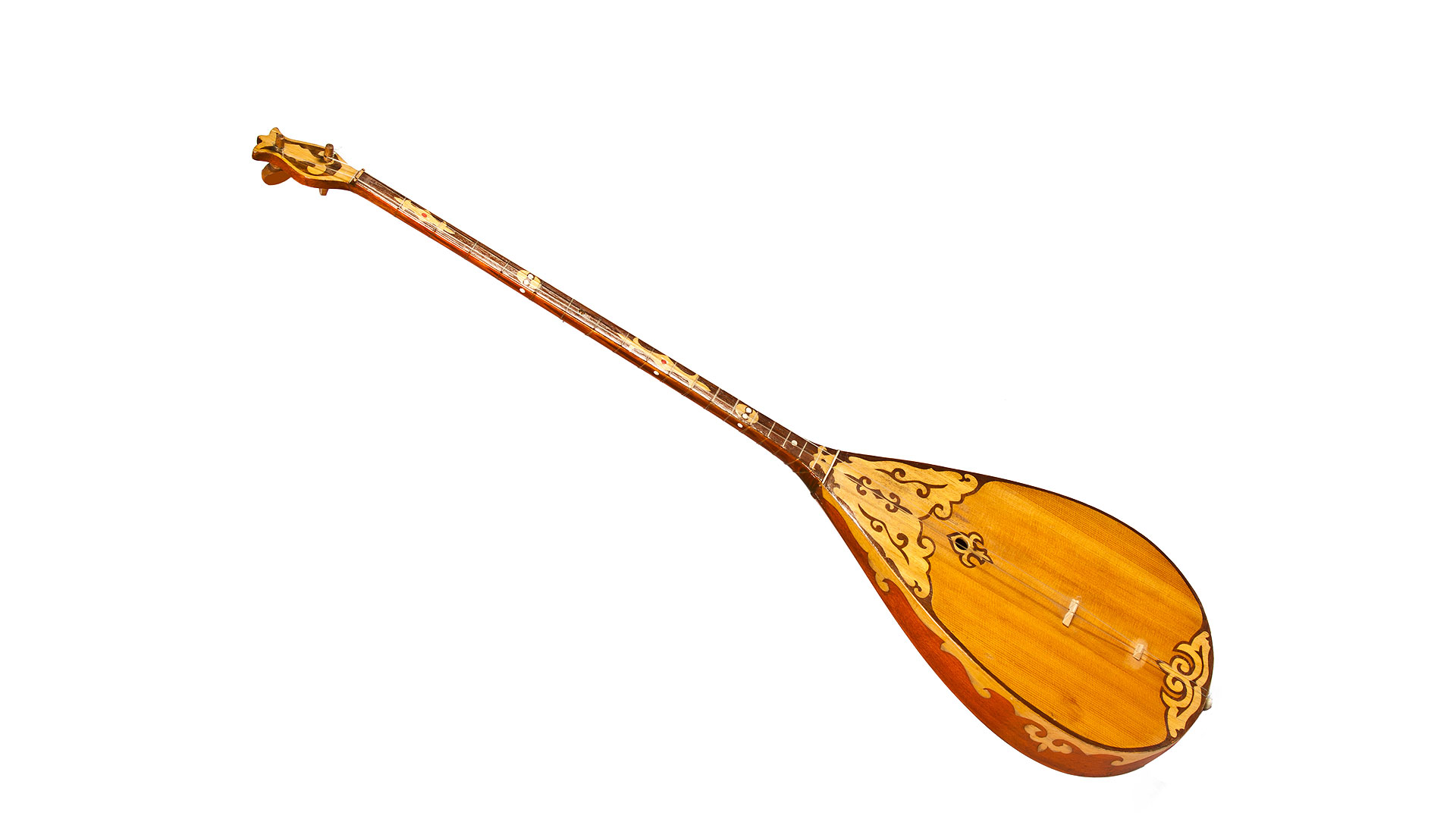Меню

At present, there are more than 20 types of Kazakh musical instruments. These include brass, plucked string, percussion, bowed and even reed instruments.
Everyone interested in national Kazakh musical instruments will learn many new things in the State Museum of Folk Music Instruments in Almaty. You can not only see a rich exhibition, but also listen to audio records of each instrument.
Types of instruments
Dombra is a string instrument that is most widely used by the Kazakh people. Dombra is at least two thousand years old, which is confirmed by archaeological data. For example, during excavations in the ancient city of Khorezm figurines with two-stringed plucked instruments, which date back to that time.
Dombra can be found in all regions of Kazakhstan. It developed differently, According to the local conditions, traditions and manners of performance.
The body of the dombra is pear-shaped, the fingerboard is long and divided by frets. There are two strings and as a rule they are in quarta or quinta.
Kobyz is a ladle-shaped bowed musical instrument. According to ancient beliefs, the sounds of the kobyz, which is capable of reproducing the voices of birds and animals, attracts the aruahs - the spirits of deceased ancestors in Kazakh.
It is believed that the first kobyz was created by the legendary storyteller-singer (zhyrau) Korkyt-ata, who is credited with the creation of the Kazakh musical tradition.
The kobyz has two strings and the body is made of a solid wood. The bow is arc-shaped and resembles a hunting bow.
Zhetygen is a plucked musical instrument. The wooden body of zhetygen has a rectangular shape and seven strings.
Origin of this musical instrument is rooted in a myth about an old father, who lost seven sons during dzhut (famine in the steppe due to the mass death of livestock caused by freezingt or pasture scorching). The inconsolable old man took a piece of wood, hollowed it out, and stringed it to play the Karagym kyu (song). After that, adding one string one by one, the grieving father played another six songs on his instrument, dedicating them to each of his deceased sons.
All of these tunes are performed today as part of the collection of seven instrumental pieces called Zhetygenny Zhetyeuy.
Sherter is a string plucked musical instrument. It looks very similar to the dombra, but it is smaller in size and has a shorter fingerboard with no frets. It is played in the same way as the dombra, but the sound is more powerful.
Sybyzgy is a brass flute-shaped musical instrument. It is made of various materials: reed, wood and even silver.
In Kazakhstan, there are two types of sybyzgy, which is associated with different regional schools of performance. For example, in the east, sybyzgy is shorter and cone-shaped, while in the west it is larger and longer.
Dabyl is a percussion instrument with a round leather-covered body and a handle. The sound of the dabyl is very powerful. In ancient times it was used not only for music, but also for long-distance sound signals.
Today, in modern orchestras of Kazakh folk instruments, there are two types of dabyl: small dabyl and big dabyl. The first has a wooden body, the second - a copper body. Today, dabyl is played with a wooden mallet with a soft tip.
Shankobyz is a reed instrument.To play it, you have to press it against the teeth or lips, while the mouth serves as a resonator. Changing the tongue position, performer can reach different pitches.
The sound of the shankobyz has a wide range of sounds, which gives it an unusually rich range of imitation, including the human voice.
Adyrna is a plucked string instrument that is played almost identically to the harp. The adyrna is somewhat reminiscent of a bow.
The body of the instrument is made of wood and sometimes finished with leather and metal. When playing, the performer holds the instrument on his knees.